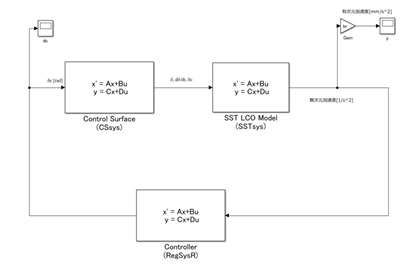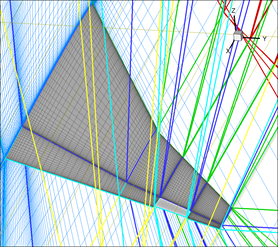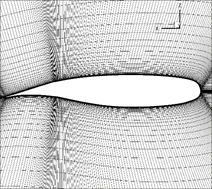Research on Active Control Technology for Dynamic Aeroelastic System
JAXA Supercomputer System Annual Report April 2016-March 2017
Report Number: R16E0012
- Responsible Representative: Yutaka Iwahori(Aeronautical Directorate, Structure and Advanced Composite Technology Reasearch Unit)
- Contact Information: Kenichi Saitoh(ksaitoh@chofu.jaxa.jp)
- Members: Kenichi Saitoh, Hamidreza Kheirandish
- Subject Category: Aviation(Aircraft,Body structure)
Abstract
The flutter which is a destructive vibration phenomenon of aircraft occurs more easily around sonic speed than the other speed range. Meanwhile, it is known to be a limit cycle oscillation (LCO). To understand these properties, wind tunnel test is performed, and accuracy of the numerical analysis is improved to simulate these phenomena. Also the control technology forsuppressing the LCO is developed.
Goal
This research is intended to reduce a structural penalty such as increasing for compensation for an aeroelastic safety in a transonic region.
Objective
The objective is to clarify the characteristics of the limit cycle oscillation (LCO) which occurs in a transonic region, and is to increase the LCO speed by more than 15% with active control.
References and Links
N/A
Use of the Supercomputer
Numerical analysis code for unsteady aerodynamics is improved and verified with data of the wind tunnel test. The performance of the LCO control will be confirmed.
Necessity of the Supercomputer
CFD simulation is required for obtaining a mathematical model for a control system. CFD simulation is also required for a demonstration of the system because it is difficult to realize the wind tunnel model which keeps a similarity law.
Achievements of the Year
Control simulation module for a general state space model was added to the CFD code. (Fig.1)
Grid for asupersonic transport model with an aileron was generated. (Fig.2)
To verify accuracy of unsteady aerodynamic analysis, a grid of the model with a control surface which is used in the joint research with DLR was generated based on geometric measurement data. (Fig.3)
Publications
N/A
Computational Information
- Parallelization Methods: Process Parallelization
- Process Parallelization Methods: MPI
- Thread Parallelization Methods: n/a
- Number of Processes: 96
- Number of Threads per Process: 1
- Number of Nodes Used: 3
- Elapsed Time per Case (Hours): 3
- Number of Cases: 4
Resources Used
Total Amount of Virtual Cost(Yen): 15,194
Breakdown List by Resources
| System Name | Amount of Core Time(core x hours) | Virtual Cost(Yen) |
|---|---|---|
| SORA-MA | 5,152.20 | 8,474 |
| SORA-PP | 84.10 | 718 |
| SORA-LM | 80.39 | 1,808 |
| SORA-TPP | 0.00 | 0 |
| File System Name | Storage assigned(GiB) | Virtual Cost(Yen) |
|---|---|---|
| /home | 3.97 | 12 |
| /data | 562.03 | 1,708 |
| /ltmp | 813.80 | 2,473 |
| Archiving System Name | Storage used(TiB) | Virtual Cost(Yen) |
|---|---|---|
| J-SPACE | 0.00 | 0 |
Note: Virtual Cost=amount of cost, using the unit price list of JAXA Facility Utilization program(2016)
JAXA Supercomputer System Annual Report April 2016-March 2017





